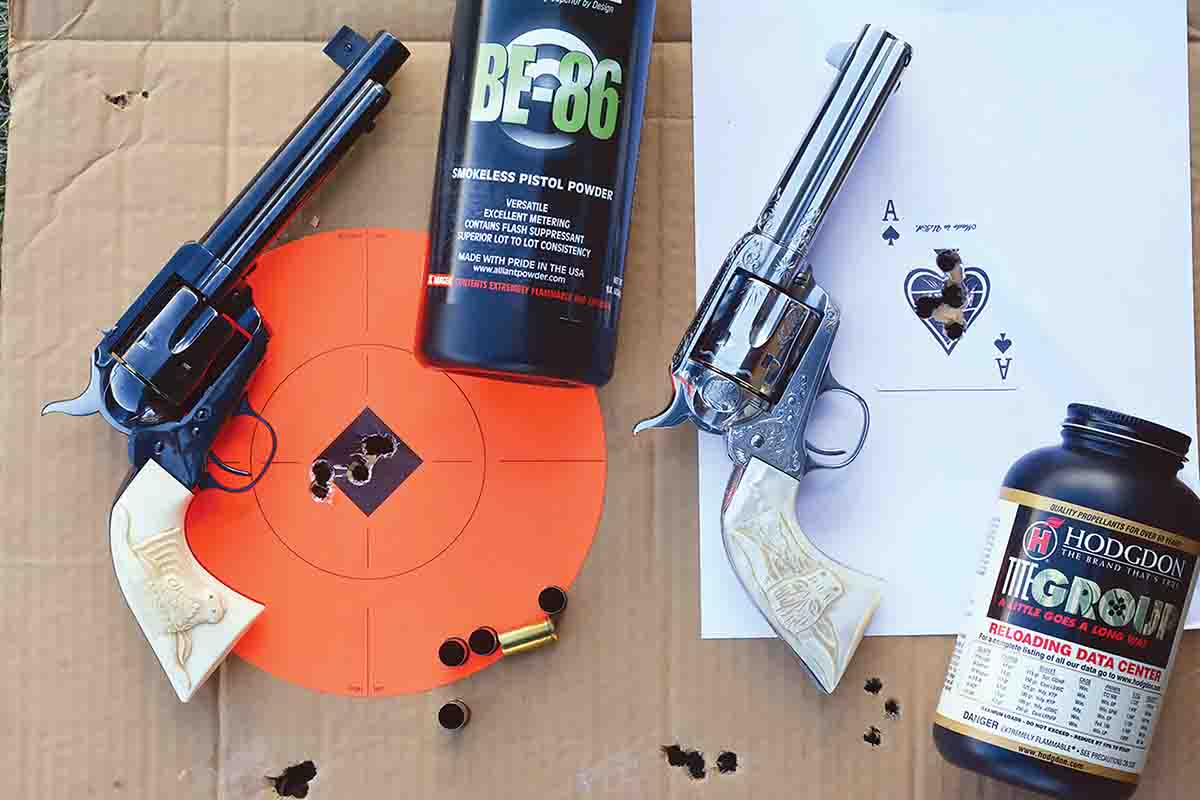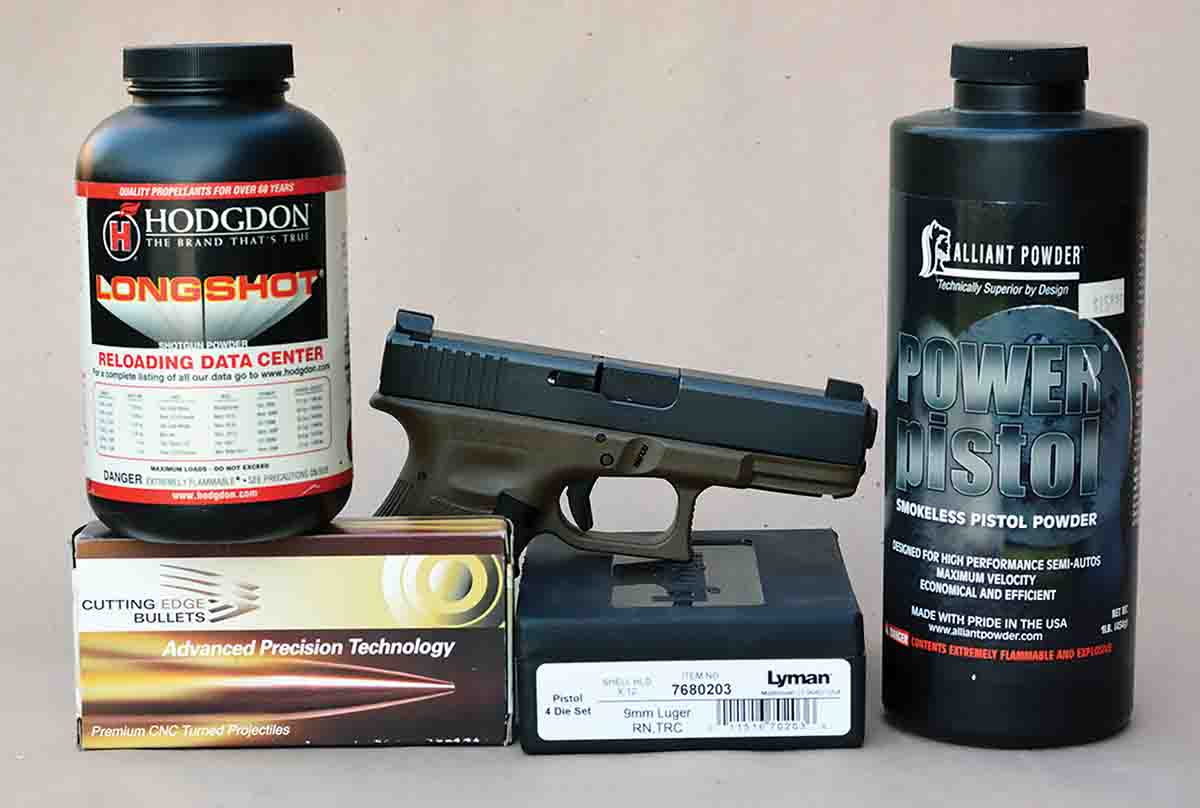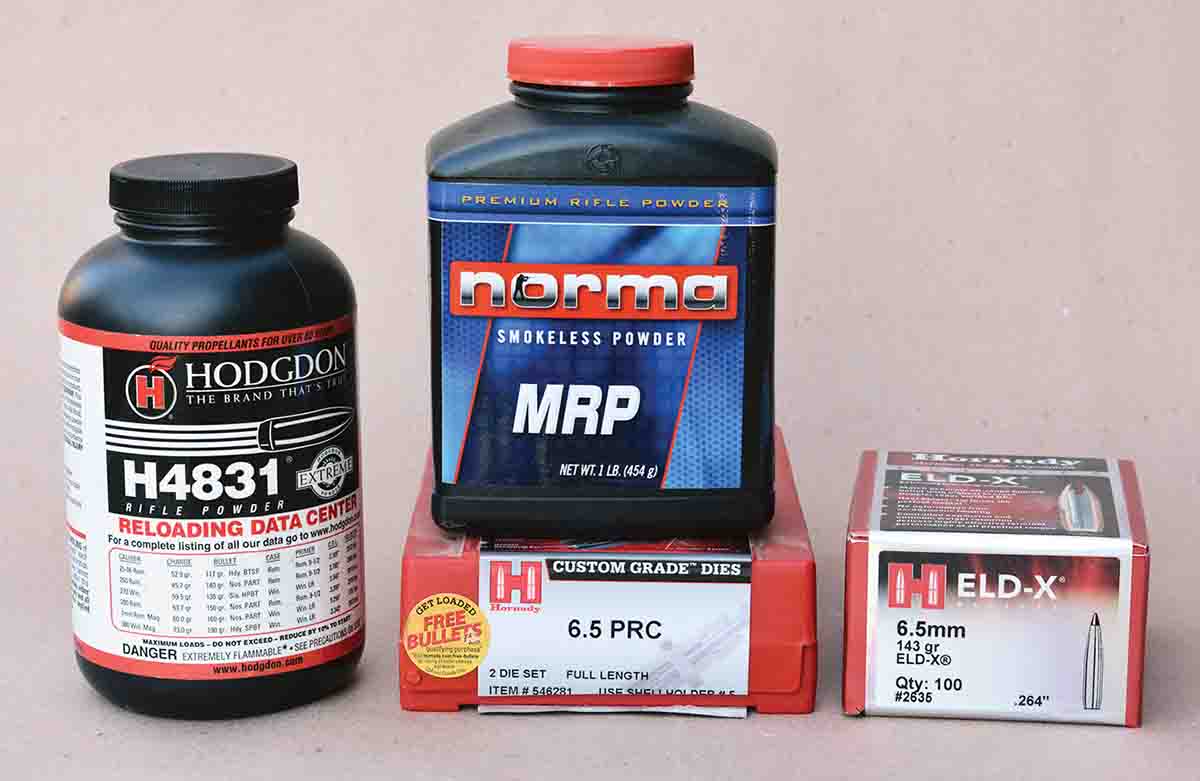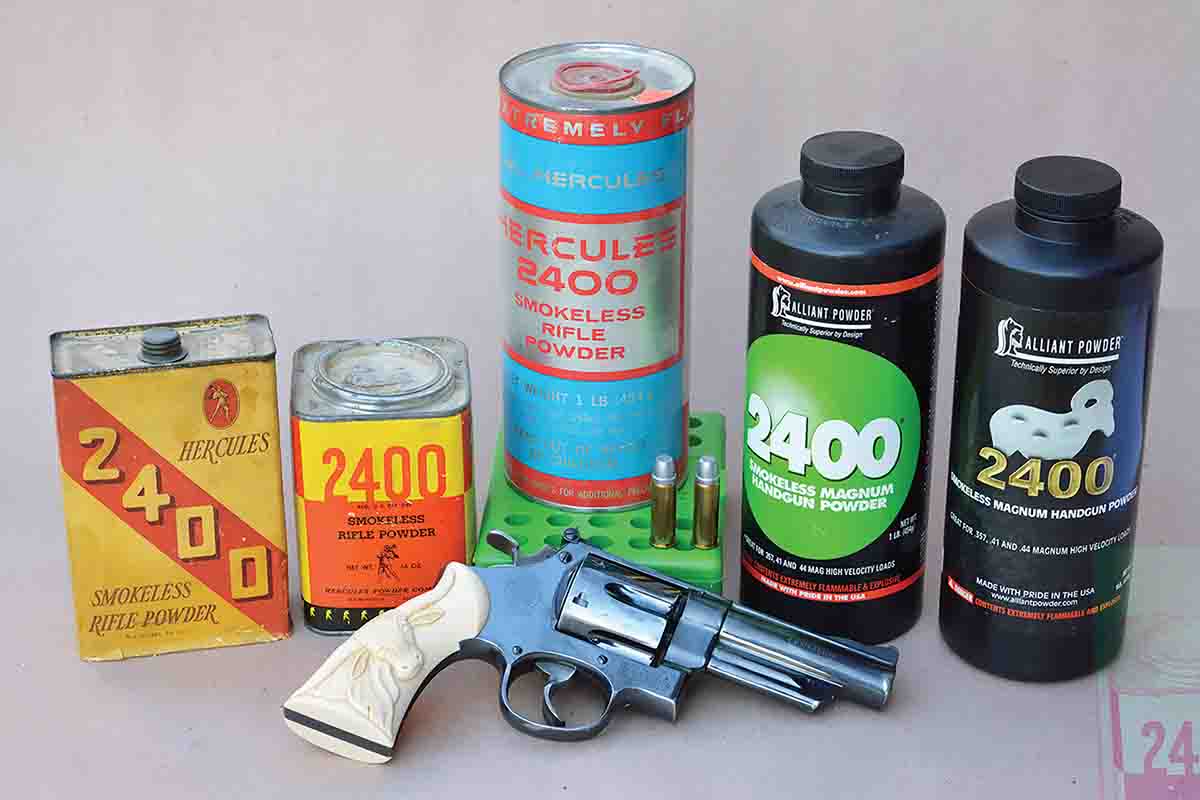Bullets & Brass
.44 Russian Bullet Alloy and Lubricants
column By: Brian Pearce | February, 23

First, what is the cylinder throat diameters for each of the two revolvers used? And are all six chamber throats the same size? Second, what bullet lubricant was used for each of the bullets that you cast? And last, what bullet alloy was used for each? I cast all of my own bullets and the above information is especially helpful.
Thank you for your time.
J.D., via email
A: Thank you for the fine compliments and I am glad that you enjoy the articles. The throats of the Colt Single Action Army and USFA .44 Russian revolvers measure .430 inch, with virtually no practical size variance from chamber to chamber. Regarding the bullet lube; Lyman NRA formula Alox was used for bullets that I cast. However, these bullets were cast, sized and lubed long before starting this article and were intended primarily for .44 Special and .44 Magnum loads that are best served with high-performance lube. With the velocities associated with standard pressure .44 Russian loads, the old Lyman Ideal bullet lube might be an even better lube choice for this cartridge. I often use a combination of proprietary casting alloys; however, bullets used within that article were cast with around a 10 Brinell Hardness Number.
I hope the above information helps!
Using the Right Powder

Now to today’s question; I normally load either FMJ NATO-style bullets in the 9mm Luger, or commercial cast bullets, which are used for practice and casual target work. When I load my guns for defensive purposes, I rely on factory loads containing JHP-style bullets. The problem is that they have not been available for some time, so I acquired a quantity of Cutting Edge Raptor 90-grain bullets and new Starline cases. The first problem that I ran into was that my go-to powder is too bulky to allow this bullet to seat to the correct overall cartridge length. Can you suggest a powder and load that will work best? Thanks in advance and keep those articles coming.
D.M., via Facebook
A: Using 7 grains of Hodgdon Longshot powder will push the 90-grain Cutting Edge Raptor bullet to 1,440 feet per second (fps) from a Kimber Team Match pistol with a 5-inch barrel. Another worthy load consists of 6.6 grains of Alliant Power Pistol powder for 1,322 fps. Both are standard pressure loads. Use a standard small pistol primer, such as the CCI No. 500 or Federal No. 100, and apply a taper crimp that measures around .379 inch (which due to this bullets construction is different when compared to loads using traditional cup and core bullets that are normally crimped .370 to .373 inch). The cartridge overall length for the above loads were tested at 1.155 inches. You don’t specify what gun or guns you are using, but barrel length, rifling style and other factors can change those velocities.
I believe that you will be happy with either load and thank you for taking the time to read Handloader magazine.
Seekins Precision Havak PH2

I had a local gunsmith that specializes in building and tuning long-range rifles check the guard screws, examine the stock bedding, scope mounts, barrel crown, etc., and he said that it should be shooting better than I am experiencing. It certainly appears to be an ammunition problem. Any thoughts would be appreciated.
D.E., via email
A: It sounds like the rifle is good, but it appears that your handloaded ammunition is the culprit. The two brands of bullets that you are using have the potential for excellent accuracy, but it sounds like your rifle just does not care for them. This is not unusual and is why load development is so crucial to obtain top accuracy. I would suggest going back to the Hornady 143-grain ELD-X bullets that worked so well previously, and then more or less duplicate the Hornady factory loads. Seat bullets to a similar COAL and more or less duplicate their listed velocity. This will give you a good starting point, and you can further fine tune the load and probably obtain even better accuracy than the “sub-half-inch groups” that you previously obtained.
2400 Powder

After leaving the farm and getting married, in the early 1960s, I obtained a Ruger Super Blackhawk .44 Magnum and a Smith & Wesson Model 29 .44 Magnum. I used Elmer Keith’s recommended load data for both guns and had no issues with that load. According to his book SIXGUNS by KEITH, in the supplement section, he recommended 22 grains of 2400 powder with his 250-grain cast bullet. This load worked perfectly in both guns; extraction was easy and accuracy excellent.
Around 1980, I took a job in a large city and finding a place to shoot was virtually impossible, so my favorite sixguns were mostly retired. Eventually, I retired, moved back to my home state of Idaho and began shooting my sixguns again. Over the years I have noticed that maximum charge weights of 2400 powder in the .44 Magnum have been continually reduced in many modern reloading manuals. After shooting up my old supplies of handloaded ammunition, I loaded up a few hundred rounds with Alliant 2400 powder using my standard old recipe containing 22 grains with the Keith bullet. To my dismay, cases were sticking in my Smith & Wesson, but the Ruger ejected cases without issue. This seems to me that pressure might be excessive with newly manufactured 2400.
So here are my questions; has the burn rate of 2400 powder changed? If so, was this change made when Alliant acquired Hercules? If 2400 has changed, how much powder should I be using with the Keith bullet? And finally, should I stick with 2400 or find another powder? I always greatly enjoy your articles and the technical aspect that you provide. Any insight would be greatly appreciated.
E.N., Arco, ID
A: During the middle 1970s I began using Hercules 2400 powder in the .357 and .44 Magnum cartridges. Like you, my loads were proven recipes that were widely published by Elmer Keith, Skeeter Skelton and many others and several mainstream reloading manuals. I used an old Oehler Model 10 chronograph to confirm velocities, but it featured paper start and stop “screens” that had to be replaced with each shot, which were costly and very slow to “code” the velocity figures. Sometimes, I wondered about the accuracy of this unit, so around 1980, I purchased an Oehler Model 33 and loved the convenience, speed and accuracy that it offered and began chronographing extensively. By the late 1980s, I noticed that the velocities obtained with 2400 powder with previous data began increasing, sometimes by 100 to 150 fps in magnum revolvers when compared to my original loads. At about this same time I became acquainted with the ballisticians at the Speer Laboratory in Lewiston, Idaho. They confirmed that they too had noticed changes in 2400 powder. This was observed almost 10 years prior to Alliant purchasing Hercules Powder in 1995. This also explains why your Smith & Wesson .44 Magnum began giving hard extraction.
Unlike non-canister grade powders sold to OEM manufacturers, canister-grade powders are generally very good about offering burn rate consistency from one lot number to the next. This is important, as most handloaders do not have a pressure barrel handy for testing. With lot-to-lot consistency, the average handloader can usually use the same published data each time a new can of powder is purchased. However, there is still some variance. In other words, one lot number of powder will give a higher or lower velocity than the next. With that thought in mind, you will generally want to use 20.5 to 21.3 grains of 2400 powder in the .44 Magnum to duplicate the old Keith load that contained 22 grains. This will generally give around 1,400 fps in revolvers with normal tolerances and 6½-inch barrels, which is exactly what the original Keith load achieved. And as a reminder, 2400 powder is an extruded propellant, which generally ignites easily and will give the lowest extreme spreads, best accuracy and lowest pressure when used in conjunction with standard, non-magnum primers such as the CCI No. 300 or Federal No. 150. If a magnum primer is used, the charge weight will need to be dropped to 18.5 grains to stay within industry maximum average pressure limits that are established at 36,000 psi.
Incidentally, Hercules 2400 was introduced in 1932 and was the first powder used in .357 Magnum factory loads in 1935. In spite of a small change in burn rate more than 35 years ago, it remains a top choice for magnum revolver cartridges. In my continual testing of powders old and new, I often see 2400 produce top accuracy and velocity in magnum revolver loads, so there is no need for you to change powders. Welcome home and I hope you have loads of fun with your old sixguns.


